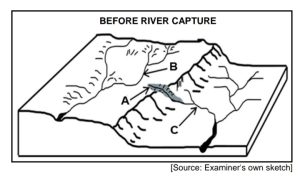Geography Grade12 2022 November Paper1 2.2
Activity Summary
0 of 7 Questions completed
Questions:
Information
You have already completed the activity before. Hence you can not start it again.
Activity is loading…
You must sign in or sign up to start the activity.
You must first complete the following:
Results
Results
0 of 7 Questions answered correctly
Your time:
Time has elapsed
You have reached 0 of 0 point(s), (0)
Earned Point(s): 0 of 0, (0)
0 Essay(s) Pending (Possible Point(s): 0)
| Average score |
|
| Your score |
|
Categories
- Geography G12 Exam Prep 0%
| Pos. | Name | Entered on | Points | Result |
|---|---|---|---|---|
| Table is loading | ||||
| No data available | ||||
- 1
- 2
- 3
- 4
- 5
- 6
- 7
- Current
- Review / Skip
- Answered
- Correct
- Incorrect
-
Question 1 of 7
1. Question
2.2 Various options are provided as possible answers to the following questions.
Choose the answer and write only the letter (A–D) next to the question
numbers (2.2.1 to 2.2.7) in the ANSWER BOOK, e.g. 2.2.8. D.
This is how your instructions will be in the exam. For this activity, just select the correct answer.
Refer to the sketch below to answer QUESTIONS 2.2.1 to 2.2.3.

2.2.1 … erosion at A is responsible for the lengthening of the river.
CorrectIncorrect -
Question 2 of 7
2. Question
Refer to the sketch below to answer QUESTIONS 2.2.1 to 2.2.3.

2.2.2 The landform caused by the type of erosion in QUESTION 2.2.1 is a …
CorrectIncorrect -
Question 3 of 7
3. Question
Refer to the sketch below to answer QUESTIONS 2.2.1 to 2.2.3.

2.2.3 River C will eventually capture river B because it flows on a … gradient and over … rock.
(i) gentler
(ii) steeper
(iii) softer
(iv) harderCorrectIncorrect -
Question 4 of 7
4. Question
Refer to the sketch below to answer QUESTIONS 2.2.4 to 2.2.7.

2.2.4 River C is known as the … stream.
CorrectIncorrect -
Question 5 of 7
5. Question
Refer to the sketch below to answer QUESTIONS 2.2.4 to 2.2.7.

2.2.5 Feature D is referred to as …
CorrectIncorrect -
Question 6 of 7
6. Question
Refer to the sketch below to answer QUESTIONS 2.2.4 to 2.2.7.

2.2.6 The resultant fluvial landform of river capture at E is a/an …
CorrectIncorrect -
Question 7 of 7
7. Question
Refer to the sketch below to answer QUESTIONS 2.2.4 to 2.2.7.

2.2.7 The characteristics of river F are that it flows in a … valley and the volume of water …
(i) wide
(ii) narrow
(iii) increases
(iv) decreasesCorrectIncorrect

